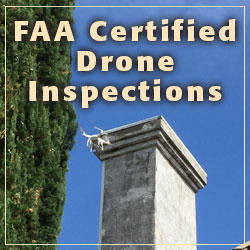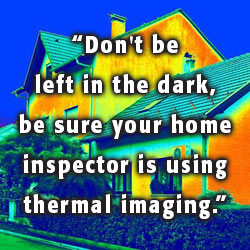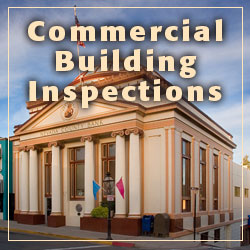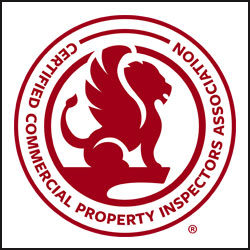Pool & Spa Inspections
Signet Home Inspections
Pool & Spa Inspections

A swimming pool is one of the most valuable assets in a home. If well cared for, it has the potential to be a place of respite and enjoyment for years to come where family and friends share memories that will last a lifetime. If left unattended, it can turn out to be an ongoing source of frustration and undue expense which is why a swimming pool & spa inspection is an important part of the whole house inspection.
Our swimming pool inspection includes checking the following:
 Above Water Safety
Above Water Safety
A swimming pool safety inspection will determine if a pool complies with California Health & Safety Code 115922 and SB 442 safety measures designed to eliminate accidental drownings as it relates to pool access including fencing, gates, alarms, covers, etc.
Below Water Safety
A Signet Home Inspections swimming pool inspection will determine if the pool complies with California the Assembly Bill No. 2114 that include requirements for anti-vortex drain covers, two circulation drains per pump with minimum drain spacing of three feet. We will also look for safe underwater lighting.
Physical Pool Structure Condition
This phase of the pool inspection includes inspecting the plaster, tile, coping and hardscape.
Plaster: The three major types of swimming pool plaster are marcite (white Portland cement mixed with finely ground marble); quartz aggregate (a step up from marcite that includes granules of natural quartz); or pebble (the top tier of pool finishes with the highest durability, aesthetic quality and price tag). The plaster condition should be uniform and free of large cracks, stains, discolorations or areas that are pitted or mottled.
 Tiles: Colorful tiles are used along the pool’s waterline to help waterproof the pool structure at the perimeter and as a decorative element. Pool builders also set tile on any raised bond beam (walls raised above the pool surface) and areas such as the façade of an elevated spa. When inspecting the tilework, we look for areas of cracked or missing grout, and stained, cracked, chipped, loose or missing tiles. We also look for tile replacement that could indicate a previous and ongoing problem.
Tiles: Colorful tiles are used along the pool’s waterline to help waterproof the pool structure at the perimeter and as a decorative element. Pool builders also set tile on any raised bond beam (walls raised above the pool surface) and areas such as the façade of an elevated spa. When inspecting the tilework, we look for areas of cracked or missing grout, and stained, cracked, chipped, loose or missing tiles. We also look for tile replacement that could indicate a previous and ongoing problem.
Coping: Decorative elements around the pool edge that define the pool’s shape and separate the surrounding deck from the pool structure itself is called coping. Coping comes in a wide variety of materials including brick, natural stone, pre-made concrete coping stones, or colored concrete pavers and typically run 12 to 18 inches in depth. The coping material should be stable without loose, chipped, cracked or missing pieces which could indicate a shifting deck. The grout or caulking between each piece should also be intact and in good condition to provide a waterproof seal.
Hardscape: Surfaces that surround the pool generally referred to as hardscape, are typically made of concrete with or without stonework. Like any other concrete patio or walkway, we look for overall surface condition and signs of spalling or aggregate erosion. We also look for signs the deck may be settling such as edge separation, cracks and displacement. Deck drainage is also important and should drain away from the pool to an area with an effective drainage system without the possibility of ponding.
Pool Ladders, Diving Boards and Slides
Accessories like ladders are convenient, and diving boards and slides can be fun. But if improperly installed or in poor condition, they can pose serious safety issues. In this phase of the swimming pool inspection, we will assesses and ladders, handrails, diving boards or slides for safety and serviceability.
 Pool Equipment:
Pool Equipment:
Swimming pools come with a variety of equipment options and features that essentially represent the heart and circulatory system that keeps the pool water clean and healthy. Included in the equipment phase of the swimming pool inspection is inspecting the main and any auxiliary pumps, skimmers, filter, heater, water fill unit, chlorinator, equipment base and any water features. Although we cannot take components apart, we can take them for a “test drive” to be sure they function without any unusual movements, noises or leaks.
Pool Electrical Systems
This phase of the swimming pool inspection includes inspecting and operating (if applicable) any equipment timers, equipment automation systems, lighting, ground fault circuit interrupter (GFCI) protection and testing the swimming pool bonding grid.
Pool Water Condition
 Last but not least is determining the swimming pool water chemistry i.e., the chlorine level, pH, alkalinity, calcium hardness and cyanuric acid. The most common chemical used in the treatment of swimming pool water is chlorine. It not only eliminates bacteria and algae by disinfecting (killing) action, it also oxidizes (chemically destroys) other materials such as dirt and chloramines.
Last but not least is determining the swimming pool water chemistry i.e., the chlorine level, pH, alkalinity, calcium hardness and cyanuric acid. The most common chemical used in the treatment of swimming pool water is chlorine. It not only eliminates bacteria and algae by disinfecting (killing) action, it also oxidizes (chemically destroys) other materials such as dirt and chloramines.


If the house you plan to purchase comes with a swimming pool, don’t risk unknown problems and costly repairs. Order a swimming pool inspection with your whole house inspection and gain peace of mind and save money in the process.








Home Inspection News
Follow Signet Home Inspections via social media.